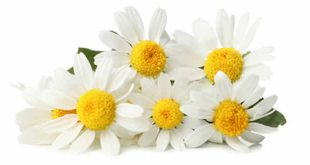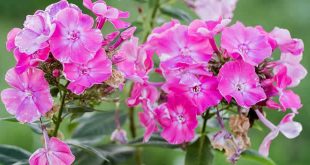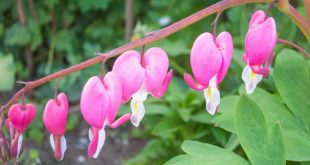 Amaranth — Amaranthus, collectively known as amaranth or pigweed, is a cosmopolitan genus of herbs. Approximately 60 species are presently recognised, with inflorescences and foliage ranging from purple and red to gold. Members of this genus share many characteristics and uses with members of the closely related genus Celosia.
Amaranth — Amaranthus, collectively known as amaranth or pigweed, is a cosmopolitan genus of herbs. Approximately 60 species are presently recognised, with inflorescences and foliage ranging from purple and red to gold. Members of this genus share many characteristics and uses with members of the closely related genus Celosia.
Although several species are often considered weeds, people around the world value amaranths as leaf vegetables, cereals and ornamentals.
Grain Amaranth
Several species are raised for amaranth grain in Asia and the Americas. Ancient amaranth grains still used to this day include the 3 species, Amaranthus caudatus, Amaranthus cruentus, and Amaranthus hypochondriacus. Although amaranth was (and still is) cultivated on a small-scale in parts of Mexico, Guatemala, Peru, India, and Nepal, there is potential for further cultivation in the U.S and tropical countries and is often referred to as “the crop of the future.” It has been proposed as an inexpensive native crop that could be cultivated by indigenous people in rural areas for several reasons: 1) easily harvested, 2) produces a lot of fruits (and thus seeds) which are used as grain, 3) highly tolerant of arid environments which are typical of tropical countries, and 4) large amounts of protein and essential amino acids, such as lysine. Due to its weedy life history, amaranth grains grow very rapidly and their large seedheads can weigh up to 1 kilogram and contain a half-million seeds. Amaranthus species are reported to have a 30% higher protein value than other pastas, such as rice, wheat flour, oats and rye.
Amaranth grain is a crop of moderate importance in the Himalaya. It was one of the staple foodstuffs of the Incas, and it is known as kiwicha in the Andes today. It was also used by the ancient Aztecs, who called it huautli, and other Native America peoples in Mexico to prepare ritual drinks and foods. To this day, amaranth grains are toasted much like popcorn and mixed with honey or molasses to make a treat called alegría (literally “happiness” in Spanish).
Amaranth was used in several Aztec ceremonies, where images of their gods (notably Huitzilopochtli) were made with amaranth mixed with honey. The images were cut to be eaten by the people. This looked like the Christian communion to the Roman Catholic priests, so the cultivation of the grain was forbidden for centuries.
Because of its importance as a symbol of indigenous culture, and because it is very palatable, easy to cook, and its protein particularly well suited to human nutritional needs, interest in grain amaranth (especially A. cruentus and A. hypochondriacus) was revived in the 1970s. It was recovered in Mexico from wild varieties and is now commercially cultivated. It is a popular snack sold in Mexico City and other parts of Mexico, sometimes mixed with chocolate or puffed rice, and its use has spread to Europe and other parts of North America. Amaranth and quinoa are called pseudograins because of their flavor and cooking similarities to grains. These are dicot plant seeds, and both contain exceptionally complete protein for plant sources. Besides protein, amaranth grain provides a good source of dietary fiber and dietary minerals such as iron, magnesium, phosphorus, copper, and especially manganese.
Vegetables
Amaranth species are cultivated and consumed as a leaf vegetable in many parts of the world. There are 4 species of Amaranthus documented as cultivated vegetables in eastern Asia: Amaranthus cruentus, Amaranthus blitum, Amaranthus dubius and Amaranthus tricolor.
In Indonesia and Malaysia, leaf amaranth is called bayam,while the Tagalogs in the Philippines,call the plant kulitis. In Andhra Pradesh, India this leaf is added in preparation of a popular dal called thotakura pappu. In China the leaves and stems are used as a stir-fry vegetable.
It is sometimes recommended by some doctors for people having low red blood cell count. In West Africa, Nigeria, It is a very common vegetable, and it goes with all Nigerian carbohydrate dishes.
Nutritional Value
Amaranth greens are a very good source of vitamins including vitamin A, vitamin B6, vitamin C, riboflavin, and folate, and dietary minerals including calcium, iron, magnesium, phosphorus, potassium, zinc, copper, and manganese. Because of its valuable nutrition, some farmers grow amaranth today. However their moderately high content of oxalic acid inhibits the absorption of calcium and zinc, and also means that they should be avoided or eaten in moderation by people with kidney disorders, gout, or rheumatoid arthritis. Reheating cooked amaranth greens is often discouraged, particularly for consumption by small children, as the nitrates in the leaves can be converted to nitrites, similarly to spinach.
 Kids Portal For Parents India Kids Network
Kids Portal For Parents India Kids Network




